Places of interests in New Delhi
Alai Minar |
The unfulfilled dream of Ala-ud-din as the victory tower, "Alai Minar" stands 27 meters high built of red sandstone, uncompleted, originally planned to be built along similar lines of Qutab Minar. "Alai Darwaza" is the main gateway to the entire complex housing the tomb of Imam Zamin, the tomb of Altamish and the mosque.
|
Birla Temple |
 Build in 1983 and also known as Lakshmi Naryan Mandir is dedicated to Lord Vishnu. Structurally similar to old Orissian temples, the chief temple houses the marble idol Vishnu or Narayan (the preserver) and Laxmi (goddess of wealth). On either side are installed the idols of goddess Durga and Lord Shiva in separate temples. Build in 1983 and also known as Lakshmi Naryan Mandir is dedicated to Lord Vishnu. Structurally similar to old Orissian temples, the chief temple houses the marble idol Vishnu or Narayan (the preserver) and Laxmi (goddess of wealth). On either side are installed the idols of goddess Durga and Lord Shiva in separate temples. |
Botanical Gardens |
20 km. Founded in 1787 by the East India Company, the main attraction of the 273-acre gardens being the banyan tree, largest in the world. Also rows of mahogany trees, an avenue of Royal Cuban palms and an Orchid House. Visitors may drive across the bridge and through Howrah, the industrial extension of Calcutta or take ferry from Chandpal or Tekta Ghats to the gardens.
|
Chandni Chowk |
The main street of 'Old' Delhi is a magnificent bazaar and as fine a monument to congestion, colour and chaos as you'll find in India today. In Shah Jahan's day, it was endowed with fine mansions, had a tree-lined canal flowing down its centre and was renowned throughout Asia; today it's jam-packed with artisans, traders and auto-rickshaws and comprises a fantastic cocktail of stench, movement, uproar and fumes. There's a Jain temple at the street's eastern end, near the Red Fort; at the western end is the Fatehpuri Mosque, built by one of Shah Jahan's wives in 1650
|
Coronation Durbar Site |
Incurable Raj fans should head to the "Coronation Durbar site", marked by a lone obelisk in a desolate field located in open country north of 'Old' Delhi. Pride of place goes to a 15m (50ft) high statue of George V that rises ghost-like above the acacia trees. It was placed here after being removed from the canopy midway along Rajpath soon after Independence. It was on this site that, in 1877 and 1903, the durbars were enacted and, in 1911,"King George V" was declared Emperor of India. Close by there's a walled garden complete with a rogues' gallery of marble statues of former imperial dignitaries, languishing like disgraced schoolboys out of the public eye.
|
Crafts Museum |
This museum is situated at Pragati Maidan, Mathura Road near the Purana Qila. It contains over 20,000 pieces of traditional Indian crafts from all over the country. The 18th to 20th century objects including terracotta sculptures from Tamil Nadu, bronzes, enamel work, wood paintings and carvings are placed here. The folk and tribal gallery has the objects constructed from the materials locally available. It highlights the mythology, ingenuity and whimsy that exists in so much of India's folk art. The upper floor exhibits the best saris and textiles and its embroideries, mirror work and appliqués Visit : Tuesday to Sunday from 10 to 5, Rs. 5/-.
|
Firoz Shah Kotla |
The ruins of "Ferozabad", the 5th city of Delhi, erected by "Feroz Shah Tughlaq" in 1354 can be found at Feroz Shah Kotla, just off Bahadur Shah Zafar Marg between the Old and New Delhi. The remains of a mosque and a well can also be seen, but most of the ruins were used for the construction of later cities. Feroz Shah was a great builder and so, this fifth city of Delhi was full of splendid palaces, mosques and gardens.Kotla was the inner citadel of Firozabad, built like Windsor, with great palaces and a magnificent mosque inspiring Timur's envy. Destroyed by the Mughals, Kotla palaces were reduced to mere ruins, exposing to view the subterranean passages and covered cloisters. One can still see the pyramidal structure topped by the Ashokan Pillar brought from Topra, and a three-tiered baoli. The Saiyyads and Lodis used Kotla as their citadel. Now more famous for the cricket ground, where many important matches were held.
|
Hauz Khas |
Hauz Khas is the historical battleground where Taimur defeated Mohammed Shah Tughlaq in 1398. One can find the remnants of an ancient college and Feroz Shah's tomb here and on the east to a short distance the Moth ki Masjid built in the finest Lodi style. Once an archetypal North Indian Village in the heart of Delhi's urban sprawl, Hauz Khas is now a shopper's paradise successfully marketing the concept of ethnicity in every possible way. Hauz Khas was a large reservoir built by Allauddin Khilji that was once the water catchments for the city. This village is remarkable for both the ancient and charming ruins in the nearby compound looking down on a still, green tank, as well as for the modern and posh shopping complex, which has sprung up around here. The madarsa, tombs and mosque around it built by Feroz Shah Tuglaq still make for an exclusive and exciting experience. Hauz Khas is also the site of India's first Night Bazaar being built by the Ministry of Tourism.
|
Humayun's Tomb |
 Humayun's Tomb is an excellent example of early Mughal architecture with a bulbous dome, geometric patterns, high arches, spire, lattice stone windows, geometric proportions, etc. This quiet but splendid edifice was the last resting place of the second Mughal emperor, who strived all his life to be in Delhi, the city he loved. This building is set in the center of a charbagh or four-garden plan, which is further divided into smaller geometric sections by a network of water channels and fountains-a reflection of Persian influence, which had been adopted by the Mughals. Entry is free on Friday. On other days, there is a small entry fee. There is an excellent view of the surrounding country from the terraces of the tomb. Humayun's Tomb is an excellent example of early Mughal architecture with a bulbous dome, geometric patterns, high arches, spire, lattice stone windows, geometric proportions, etc. This quiet but splendid edifice was the last resting place of the second Mughal emperor, who strived all his life to be in Delhi, the city he loved. This building is set in the center of a charbagh or four-garden plan, which is further divided into smaller geometric sections by a network of water channels and fountains-a reflection of Persian influence, which had been adopted by the Mughals. Entry is free on Friday. On other days, there is a small entry fee. There is an excellent view of the surrounding country from the terraces of the tomb. |
Iron Pillar |
This seven-metre-high pillar stands in the courtyard of the mosque and has been there since long before the mosque's construction. A six - line Sanskrit inscription indicates that it was initially erected outside a Vishnu temple, possibly in Bihar, and was raised in memory of the Gupta king, Chandragupta Vikramaditya, who ruled from 375 to 413. What the inscription does not tell is how it was made. Scientists have never discovered how this iron, which is of such purity that it has not rusted after 2000 years, could be cast with the technology of the time. It is said that if you can encircle the pillar with your hands whilst standing with your back to it, your wish will be fulfilled.
|
Jama Masjid |
The great mosque of 'Old' Delhi is the largest in India, with a courtyard capable of holding 25,000 devotees. It was built in 1644 and was the last in the series of architectural indulgences of "Shah Jahan", the Mughal emperor who also built the "Taj Mahal" and the "Red Fort". The highly decorative mosque has three great gateways, four towers and two 40m (135ft) high minarets constructed of strips of red sandstone and white marble. Travellers arriving bare-legged can hire robes at the northern gate. This may be the only time you get to dress like a local without feeling like a prat, so make the most of the hallowed atmosphere.
|
Jantar Mantar |
At first sight, the "Jantar Mantar" appears like a gallery of modern art. It is, however, an observatory. Sawai Jai Singh II of Jaipur (1699-1743), a keen astronomer and a noble in the Mughal court, was dissatisfied by the errors of brass and metal astronomical instruments. Under patronage from the emperor, he set on himself the task of correcting the existing astronomical tables and updating the almanac with more reliable instruments. Delhi's Jantar Mantar is the first of the five observatories that he built with large masonry instruments. The observatory has the Samrat Yantra, a simple equal hour sun dial, the Ram yantra for reading altitudinal angles; Jai Prakash for ascertaining the position of the sun and other celestial bodies, and the Misra Yantra which is a combination of four scientific gadgets.
|
Kabuli or Khuni Darwaza |
To the left of Chandni Chowk; there was once a gate across the road that was called Khuni Darwaza or the Bloody Gate. The British reoccupied Delhi on 20 September 1857 after fierce resistance by rebels. On 21 September 1857 Bahadur Shah surrendered to Hudson at Humayun's tomb. On 22 September three Mughal princes, Mirza Moghul, Mirza Khizr Sultan and Mirza Abu Bakr were brought by Captain Hudson in a bullock-cart and shot dead at Khuni Darwaza near Delhi Gate. He ordered the princes to take off their upper garments and killed them one by one. The three bodies were carried to the Kotwali and stripped off all the clothes except a rag around their loins, and laid on stone slabs outside the building before they were buried. The reoccupation of Delhi was followed by massacre and plunder and it was even suggested that whole city be razed to the ground. Mirza Ghalib, the great Urdu Poet, who was a witness to the killings and plunder wrote in his Dastambu: "GOD ALONE knows the the number of persons who were hanged. The victorious army entered the city along the main road. Whomsoever they met on the way was killed." The "Khuni Darwaza" still stands in its solitary grandeur exactly opposite the main gate of the Maulana Azad Medical College.
|
Lahore Gate |
The Lahore Gate-so named because it faces in the direction of Lahore, Pakistan-is significant not only in ancient history as the main gate of this ancient Moghal fort, but also in present day as an important symbol of the modern Indian nation. During India's long struggle for independence from British colonial rule, nationalists often dreamed of the day that the Indian flag would fly over the Red Fort. Since Independence, leaders like Nehru and Indira Gandhi have used the gate as a backdrop for political speeches, knowing the symbolic and emotional power it holds for the people of India. Every year on Independence Day (August 15) people gather in the big open area in front of Lahore Gate for a speech from the Prime Minister.
|
Lotus Temple |
 In the heart of New Delhi,the bustling capital of India,a lotus-shaped outline has etched itself on the consciousness of the city's inhabitants, capturing their imagination, fuelling their curiosity,and revolutionising the concept of worship.This is the Bahá'í Mashriqu'l-Adhkar, better known as the "Lotus Temple".With the dawning of every new day,an ever-rising tide of visitors surges to its doorsteps to savour its beauty and bask in its serenely spiritual atmosphere. Rising up pure and unsullied from stagnant water, the lotus represents the manifestation of God. The architect used this ancient Indian symbol to create a design of ethereal beauty and apparent simplicity, belying the complex geometry underlying its execution in concrete form. The Lotus Temple provides one of the rare exceptions with its remarkable fusion of ancient concept, modem engineering skill, and architectural inspiration, making it the focus of attention amongst engineers and architects the world over. In the heart of New Delhi,the bustling capital of India,a lotus-shaped outline has etched itself on the consciousness of the city's inhabitants, capturing their imagination, fuelling their curiosity,and revolutionising the concept of worship.This is the Bahá'í Mashriqu'l-Adhkar, better known as the "Lotus Temple".With the dawning of every new day,an ever-rising tide of visitors surges to its doorsteps to savour its beauty and bask in its serenely spiritual atmosphere. Rising up pure and unsullied from stagnant water, the lotus represents the manifestation of God. The architect used this ancient Indian symbol to create a design of ethereal beauty and apparent simplicity, belying the complex geometry underlying its execution in concrete form. The Lotus Temple provides one of the rare exceptions with its remarkable fusion of ancient concept, modem engineering skill, and architectural inspiration, making it the focus of attention amongst engineers and architects the world over. |
Nizam-ud-din- Shrine |
The shrine of the Muslim Sufi saint, Nizamuddin Chishti, who died in 1325 aged 92, is across the road from Humayun's tomb. With its large tank, it is one of several interesting tombs here. Other tombs include the later grave of Jahanara, the daughter of Shan Jahan, who stayed with her father during his imprisonment by Aurangzeb in Agra's Red Fort. Amir Khusru, a renowned Urdu poet, also has his tomb here as does Atgah Khan, a favourite of Humayun and his son Akbar. It's worth visiting the shrine at around sunset on Thursdays, as it is a popular time for worship, and qawwali singers start performing after the evening prayers.
|
Purana Quila |
Located south-east of India Gate, the ruins of this majestic fort rise on a small hill in the green parkland of the Delhi Zoo. In 1533 A.D., the second Mughal Emperor, Humayun, laid the foundation. Archaeological excavations in this area suggest that the site beneath Purana Qila may well have been the city of Indraprastha, the legendary site of the Hindu epic, The Mahabharatha. These findings are displayed at the Field Museum. Delhi Tourism & Transportation Development Corporation Ltd. (DTTDC) organises a 62 minute Sound and Light Show every evening, which depicts events related to the fort from the times of Indraprastha to the Independence. The show is held both in Hindi and in English.
|
Qutub-Minar |
 This 240 ft tall tower is the tallest monument in India ushered in the new Indo-Islamic style of architecture, which was a fusion of the Indian and Mughal styles. A 7m (23ft) high iron pillar stands in the courtyard of the mosque. It's said that if you can encircle it with your hands whilst standing with your back to it, your wish will be fulfilled. However, a fence now protects the pillar. This 240 ft tall tower is the tallest monument in India ushered in the new Indo-Islamic style of architecture, which was a fusion of the Indian and Mughal styles. A 7m (23ft) high iron pillar stands in the courtyard of the mosque. It's said that if you can encircle it with your hands whilst standing with your back to it, your wish will be fulfilled. However, a fence now protects the pillar. |
Raj Ghat |
Raj Ghat, not far from the banks of the Yamuna River, has a simple black marble memorial to Mahatma Gandhi, marking the spot where he was cremated following his assassination in 1948. A commemorative ceremony takes place every Friday. Nearby there are two museums dedicated to Gandhi. Jawaharlal Nehru was cremated just to the north at Shanti Vana (Forest of Peace). The area is now a beautiful park with labelled trees planted by a mixed bag of notables, including Elizabeth II, Dwight Eisenhower and Ho Chi Minh. The rarely-visited but quite beautiful Zinat-ul Masjid (Most Beautiful of Mosques) towers over Raj Ghat.
|
Red Fort or Lal Quila |
Safdar Jung Tomb |
The "Safdarjung Tomb" was built in 1753-54 by the Nawab of Avadh for his father, "Safdarjung", and is one of the last examples of Mughal architecture before the final remnants of the great empire collapsed. The tomb, like that of Humayun, has a nine-part, square plan, built upon an arcaded plinth. Each facade is finished in pink and white stone, and contains several highly decorated cusped arches representative of the ornate style of the later Mughal style. A large bulbous dome rises from a constricted drum. The interior is decorated with stucco carvings. Entry is free on Friday. On other days a small entry fee is charged. This tomb is adjacent to the small Safdarjung airport
|
Shalimar Bagh |
The Shalimar Garden, which lies on the fringes of the city about 10km (33ft) north-west of 'Old' Delhi, is one of the most important Moghul gardens in the city. This was once the first-night staging post for the Moghuls on their way to Kashmir and Lahore. Aurangzeb was crowned emperor here in 1658. The beautiful central pavilion, the Shish Mahal, was built by Shah Jahan. Although it is in a fairly advanced state of decay, some of the original painted flower decoration has survived and the place has lots of atmosphere.
|
Spice Market |
Khari Baoli, the street that runs from the Fatehpuri Mosque to the western edge of the old city, is Delhi's bustling wholesale spice market. It's well worth a wander simply to take in the sights and smells because things have changed little here for centuries. Huge sacks of herbs and spices are still brought to the wholesalers on long, narrow barrows pushed by labourers, and there are eye-catching displays of everything from lentils and rice to giant jars of chutneys, pickles, nuts and tea.
|
The National Museum |
The National Museum was formally inaugurated in 1949 by Governor-General R.C. Rajagopalachari and initially housed in the Rashtrapati Bhavan with selected artifacts from various museums of India. In 1955, the foundation stone of the present majestic building on the corner of Janpath and Maulana Azad Road was laid by Jawaharlal Nehru and the museum was shifted here and opened to visitors in 1960. Now it is the largest museum in Delhi with around 2,00,000 exhibits of exquisite art both foreign and Indian, giving a detailed insight into Indian history and its cultural heritage.
|
Tughlaqabad Fort |
The "Tughlaqabad Fort" is not only symbolic of the might of the "Tughlaq dynasty", but it is a piece of architectural marvel. The crumbling ruins of the "Tughlaqabad Fort" convey a sense of lost grandeur. The massive ramparts, battlements, and the mammoth stonework of this fort speak highly of the engineering skills of the workers who constructed it.There are number of monuments within the precincts of this massive fort. On the southern side of the fort is a causeway that takes one across the (now) dry bed of a lake to the tomb of Ghiyas-ud-din Tughlaq. The style of the tomb conforms to the Indo-Islamic style of architecture, which was in vogue at that time and was the hallmark of the buildings belonging to the period of the Delhi Sultanate. Tourists looking forward to understand the intricacies that the Tughlaqabad Fort is founded on should surely visit the place on their travel to New Delhi.
|











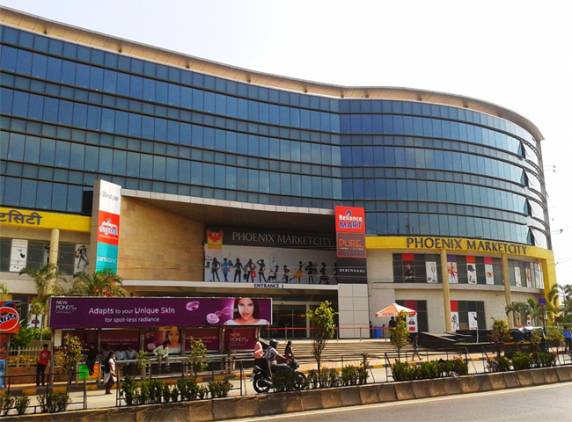
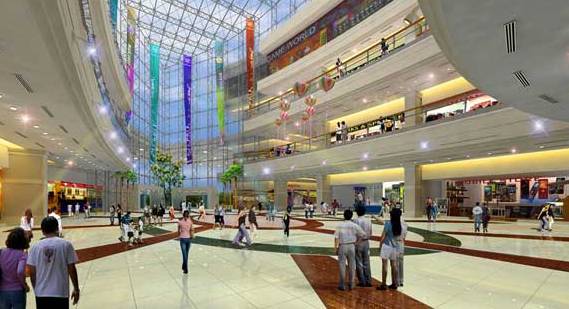
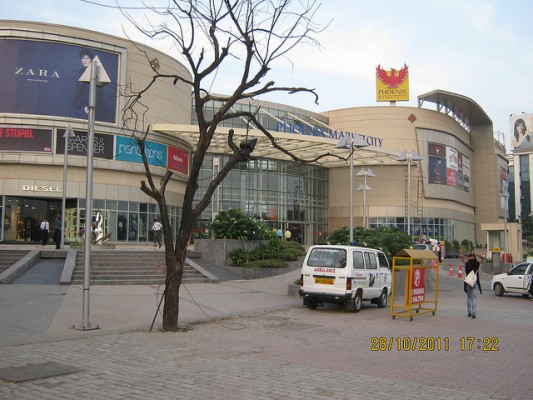

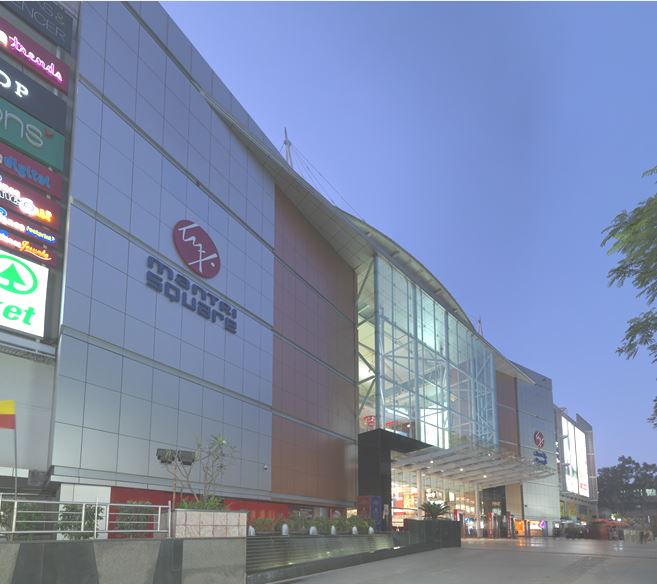
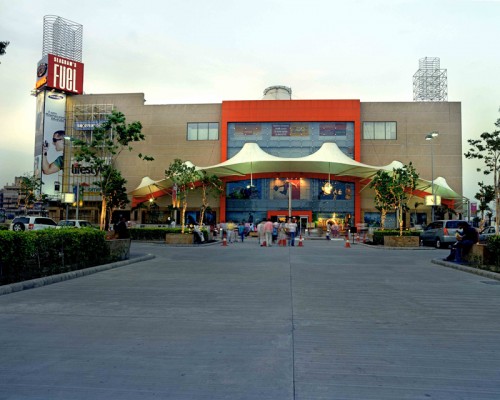
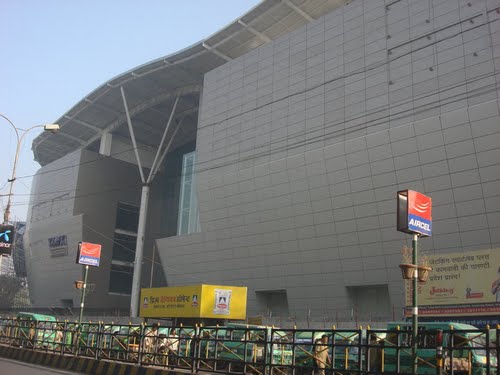
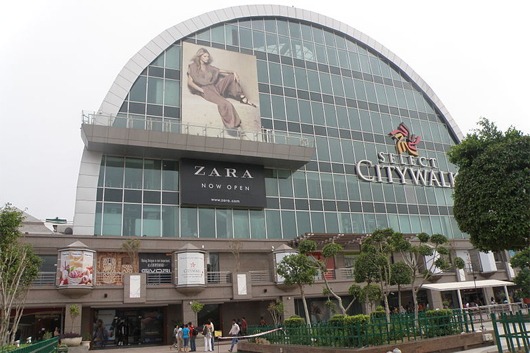
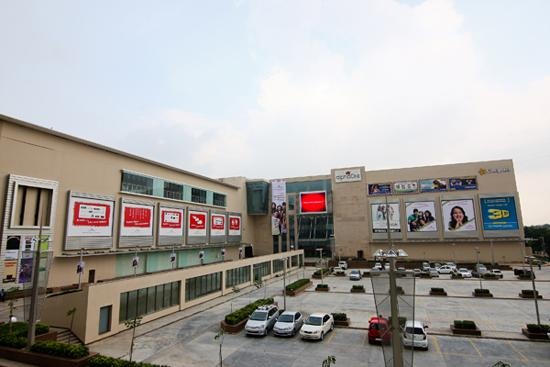
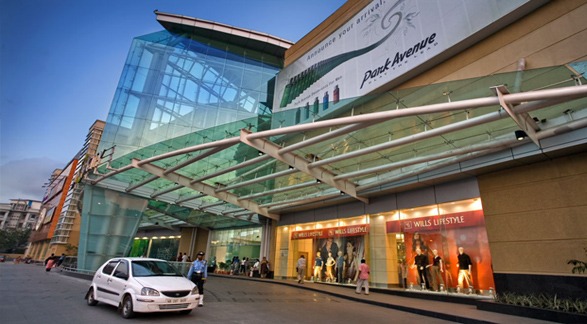







 Taj Mahal, the pinnacle of Mughal architecture, was built by the
Mughal emperor Shah Jahan (1628-1658), grandson of Akbar the great, in the
memory of his queen Arjumand Bano Begum, entitled ‘Mumtaz Mahal’. Mumtaz Mahal
was a niece of empress Nur Jahan and granddaughter of Mirza Ghias Beg
I’timad-ud-Daula, wazir of emperor Jehangir. She was born in 1593 and died in
1631, during the birth of her fourteenth child at Burhanpur. Her mortal remains
were temporarily buried in the Zainabad garden. Six months later, her body was
transferred to Agra to be finally enshrined in the crypt of the main tomb of the
Taj Mahal. The Taj Mahal is the mausoleum of both Mumtaz Mahal and Shah
Jahan.
Taj Mahal, the pinnacle of Mughal architecture, was built by the
Mughal emperor Shah Jahan (1628-1658), grandson of Akbar the great, in the
memory of his queen Arjumand Bano Begum, entitled ‘Mumtaz Mahal’. Mumtaz Mahal
was a niece of empress Nur Jahan and granddaughter of Mirza Ghias Beg
I’timad-ud-Daula, wazir of emperor Jehangir. She was born in 1593 and died in
1631, during the birth of her fourteenth child at Burhanpur. Her mortal remains
were temporarily buried in the Zainabad garden. Six months later, her body was
transferred to Agra to be finally enshrined in the crypt of the main tomb of the
Taj Mahal. The Taj Mahal is the mausoleum of both Mumtaz Mahal and Shah
Jahan. In all, the Taj Mahal covers an area of 60 bighas, as the
terrain gradually sloped from south to north, towards the river, in the form of
descending terraces. At the southern point is the forecourt with the main gate
in front and tombs of Akbarabadi Begum and Fatehpuri Begum, two other queens of
Shah Jahan, on its south-east and south-west corners respectively called Saheli
Burj 1 and 2.
In all, the Taj Mahal covers an area of 60 bighas, as the
terrain gradually sloped from south to north, towards the river, in the form of
descending terraces. At the southern point is the forecourt with the main gate
in front and tombs of Akbarabadi Begum and Fatehpuri Begum, two other queens of
Shah Jahan, on its south-east and south-west corners respectively called Saheli
Burj 1 and 2.
